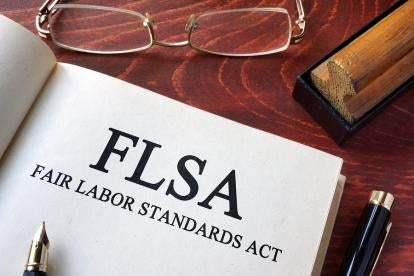-
Labor Department says Fair Labor Standards Act does not apply to independent contractors.
-
Control over work and opportunity for profit and loss are core factors in defining independent contractors.
-
Biden administration may freeze new rule in favor of developing its own.
-
The DOL rule applies to the FLSA. Other statutes, including state laws, must be considered.
The U.S. Department of Labor has issued a final rule to determine whether a worker should be classified as an employee or independent contractor for purposes of the Fair Labor Standards Act (FLSA). If a worker is an independent contractor, the FLSA does not apply to the worker, including its minimum wage and overtime requirements. The rule is seen as beneficial to employers especially those that utilize gig workers such as Uber and Instacart. Whether it will survive the upcoming change in administrations is an open question.
Economic Reality is the Test
The rule established economic dependence as the ultimate inquiry. In other words, an individual is an independent contractor, as distinguished from an “employee” under the FLSA, if the individual is as a matter of economic reality, in business for him or herself. The rule provides several factors to assess the economic reality of a worker’s situation. No on single factor is dispositive but the rule establishes two “core factors” that carry greater weight than other factors.
The Core Factors
The first core factor is the nature and degree of control over the work. This factor weighs towards the individual being an independent contractor when the individual exercises substantial control over key aspects of the performance of the work, such as by setting one’s own schedule, by selecting one’s projects, and/or through the ability to work for others, which might include the potential employer’s competitors. In contrast, this factor weighs in favor of the individual being an employee under the Act to the extent the employer, as opposed to the individual, exercises substantial control over key aspects of the performance of the work. For example, controlling the individual’s schedule or workload by directly or indirectly requiring the individual to work exclusively for the potential employer supports classification as an employee.
The second core factor is the individual’s opportunity for profit or loss. This factor weighs towards the individual being an independent contractor when the individual has an opportunity to earn profits or incur losses based on the exercise of initiative or management of one’s personal investment in or capital expenditure on, for example, helpers or equipment or material to further the work. This factor weighs towards the individual being an employee to the extent the individual is unable to affect the earnings or is only able to do so by working more hours or faster.
Other Factors
The rule provides for other factors that can be considered in classifying the worker’s status as employee or independent contractor. Those factors are:
-
The amount of skill required for the work. This factor weighs in favor of the individual being an independent contractor to the extent the work at issue requires specialized training or skill that the potential employer does not provide.
-
The degree of permanence of the working relationship between the individual and the potential employer.
-
Whether the work is part of an integrated unit of production.
-
Additional factors may be relevant in determining whether an individual is an employee or independent contractor for purposes of the FLSA, but only if the factors in some way indicate whether the individual is in business for the worker, as opposed to being economically dependent on the potential employer for work.
But Will It Last?
The rule is scheduled to be published in the Federal Register on January 7, 2021. It will become effective 60 days after publication. The Biden administration could freeze the rule or start its own rule-making process. Additionally, if the rule were to go into effect there is a good chance that there will be litigation challenging its validity as has occurred with the DOL’s rule regarding joint employment.
Don’t Forget About the States
The DOL rule applies to the FLSA. Whether a worker is an employee or independent contractor is a question that is important under other statutes. For example, the IRS has its own rules and guidance to determine the proper classification of a worker for tax purposes. Individual states also have their own tests for determining the proper classification of a worker for state wage and hour laws. For example, California recently enacted legislation establishing its own standards. Other states have common law tests established by court rulings over the years and some states, like North Carolina, are establishing worker classification units within their agencies to address concerns that workers are being misclassified as independent contractors and not employees.




 />i
/>i

